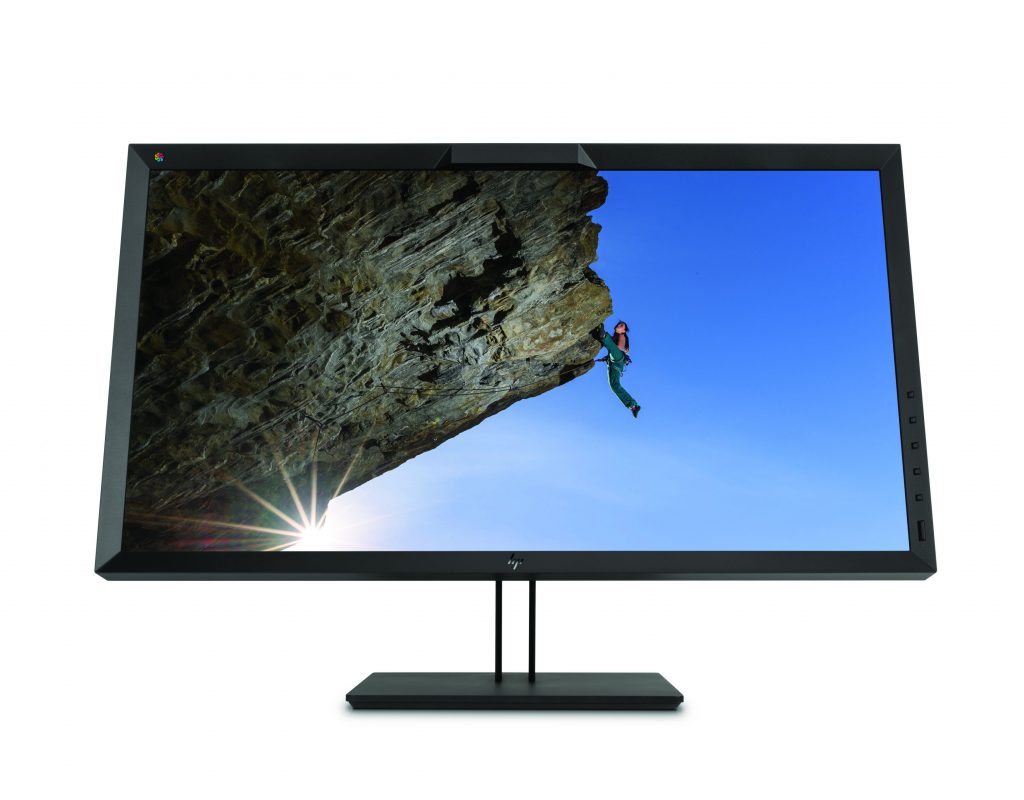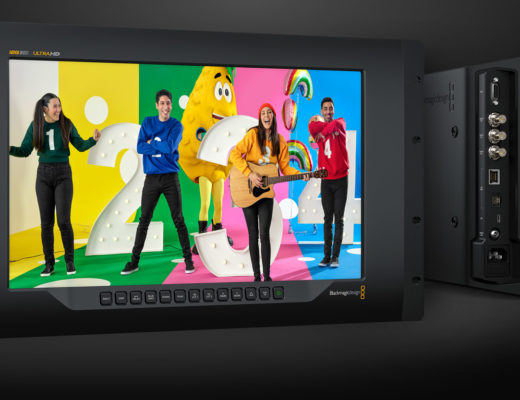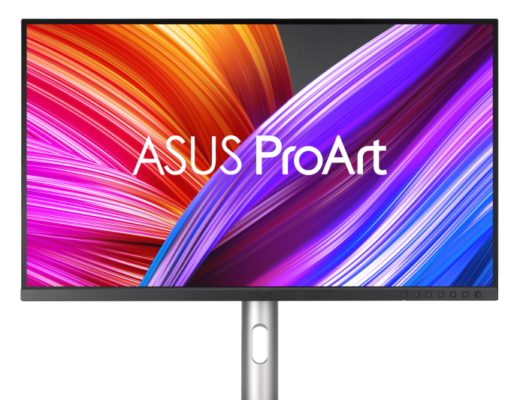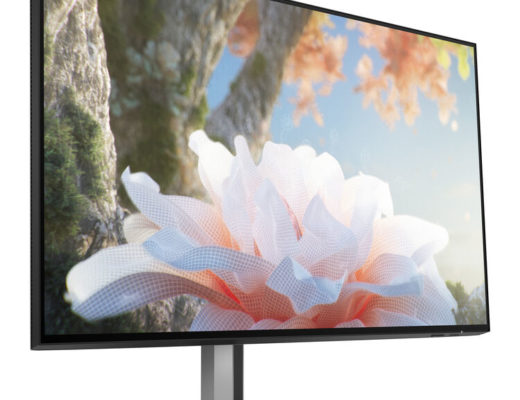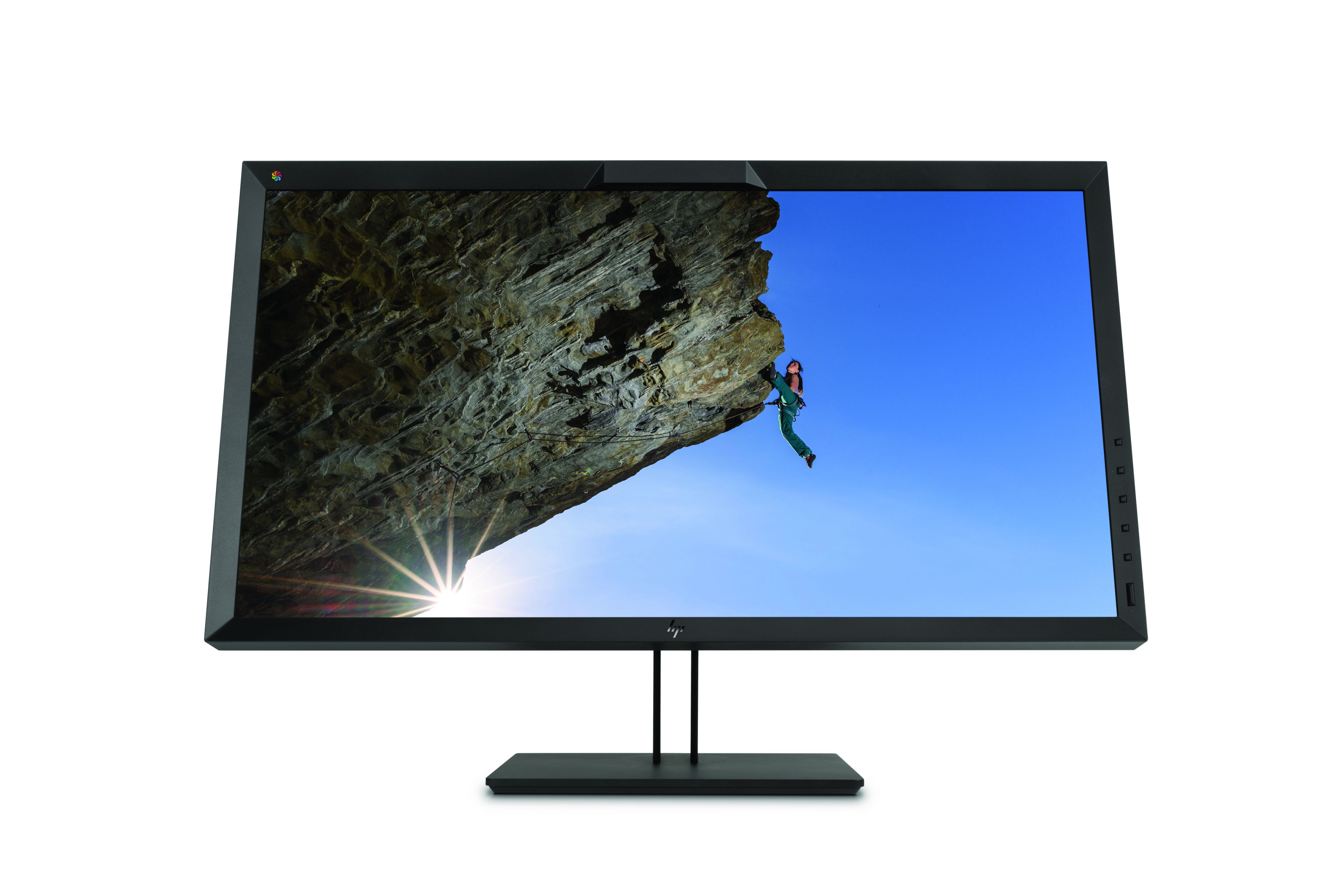
At NAB, HP has announced its new DreamColor Z31x with native 4K cinema resolution and some very welcome new features, and has also released a somewhat improved “little brother”, the Z24x G2 (second generation), which remains much more affordable, yet much more limited. Although I haven’t seen them personally yet, I was able to ask very specific questions during the online presentation last week, which I’ll cover ahead, together with the official specs, prices, availability, and my still-required rant about non-integer framerates and integer pricing. I hope to publish a full review of the Z31x later this year, with a more detailed article about the Z24x.
DreamColor Z31x
The DreamColor Z31x offers native 4K cinema resolution (4096×2160 with 1.9:1 aspect ratio) while also being able to display smaller 16:9 and 4:3 resolutions like 4K UHD 3840×2160; 2048×2160; 2560×1440; 2048×1080; 1920×1080; 1366×768; 1280×1024; 1280×720; 1024×768; 800×600; 720×400; 640×480.
Keeping tradition, the DreamColor Z31 offers a true 10-bit panel, and also offers 100% of sRGB, 100% of BT.709, 100% of AdobeRGB, 99% of DCI-P3, 80% of BT.2020.
HP confirmed to me that (like prior DreamColor displays), the DreamColor Z31x can properly lock to integer and non-integer framerates including:
- 23.976 (further rounded to 23.98 by some)
- 24 exact
- 25
- 29.97 (yes, it’s a rounded number too)
- 47.952
- 48 exact
- 50
- 59.94 (yes, it’s a rounded number too)
However, I pushed to get more information, since proper locking isn’t enough. I wanted to know whether the Z31x would also properly display the incoming framerate on its OSD (onscreen display), since prior DreamColor models have not done it correctly at all framerates, as I have reported to HP. For example, the original LP2480zx rounds all non-integer framerates to the closest integer on the OSD, and the more recent Z27x (Amazon link, B&H link) is inconsistent, properly reporting some non-integer framerates, but not others. HP promises that this has been handled perfectly with the new Z31x. I’ll confirm that when I publish my review.
The Z31x inputs include two DisplayPort 1.2 connectors, two HDMI 2.0 and one USB Type-C (DisplayPort Alt Mode).
Unlike any DreamColor before, the Z31x features a built-in colorimeter, as well as an integrated KVM switch, preset and customizable on-screen markers, user presets, remote management, customizable on-screen controls, “Real” IPS, and is fortunately still matte (aka “anti-glare”)!
Z24x G2
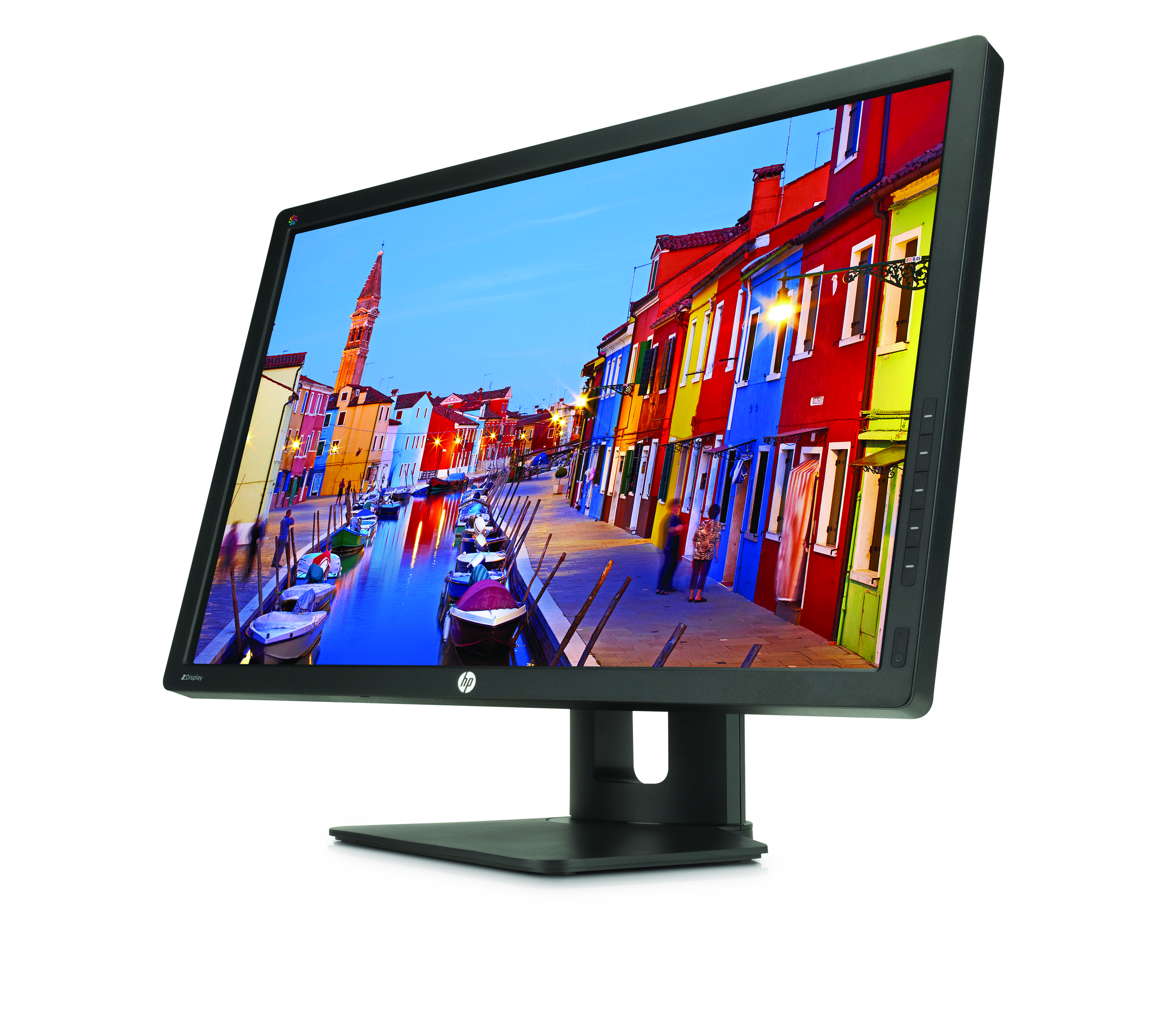
Some people call it the DreamColor’s “little brother”. Others call it a “junior” DreamColor. At well under US$600, the Z24x G2 (second generation) is much more affordable than the original sticker price of the first LP2480zx DreamColor, the still current Z27x… or the just announced Z31x.
Fortunately, the Z24x G2 has improvements over the first generation Z24x, especially since the first generation Z24x only offered calibration software for Windows, not Mac. The new Z24x G2 fortunately offers calibration software for both Mac and Windows. However, the Z24x G2 is much more limited —for pro video applications— than the higher priced DreamColor models regarding native framerates. HP responded that the Z24x G2 is 60 Hz ±0.5%. By my math, 60 – 0.5% = 59.7 which means that it barely covers 59.94, so if you want to watch the native cadence, it’s really only appropriate for 29.97 and 59.94 timelines/projects. Forget about native cadence monitoring of 25 and 50 fps timelines/projects, and if you edit video with a 23.976 or exact 24 timeline, you’ll have to view it with a 2:3 (aka 3:2) pulldown. Of course, those framerate limitations are irrelevant for pre-press applications.
At publication time of this article, HP had not yet responded as to whether the HP calibration software for the Z24x G2 actually stores the created profile in the monitor (which is critical if you are going to connect it via a professional video interface) as higher-end DreamColor monitors do, or whether they are stored in the host computer (okay for direct-to-computer connection only, with its associated framerate issues. This is especially relevant on Mac, where the computer won’t even deliver any non-integer framerates directly, as covered in past articles). I will publish more information on the Z24x G2 as I receive it, together with a detailed and practical comparison chart between the Z24x, a ±US$300 consumer multi-standard 1080p HDTV set with “true 24p” (as covered in this article) and the higher end DreamColor monitors. Be sure to be on my mailing list to assure receiving that and other future articles.
Price and availability
HP says that the DreamColor Z31x is scheduled to be available later this year (2017) for $3999, and that the DreamColor Z24x G2 Display is scheduled to be available in early July 2017 for US$559.
My comment/rant about rounding framerates versus prices
In my humble opinion, all manufacturers should state non-integer framerates to two decimals (i.e. 29.97 and 59.94) in spec sheets and OSDs (onscreen displays) for best understanding and usage by the production community. Whenever possible, they should also state 23.976 to three decimals, and only if constrained in space should they state it as 23.98. However, professional products’ list prices should be proudly and officially set at the closest round number, i.e. US$560 and US$4000.
Upcoming articles, reviews, radio shows, books and seminars/webinars
Stand by for upcoming articles, reviews, and books. Sign up to my free mailing list by clicking here. Most of my current books are at books.AllanTepper.com, and my personal website is AllanTepper.com.
Si deseas suscribirte a mi lista en castellano, visita aquí. Si prefieres, puedes suscribirte a ambas listas (castellano e inglés).
Listen to his CapicúaFM show at CapicúaFM.com in iTunes or Stitcher.
FTC disclosure
No manufacturer is specifically paying Allan Tépper or TecnoTur LLC to write this article or the mentioned books. Some of the other manufacturers listed above have contracted Tépper and/or TecnoTur LLC to carry out consulting and/or translations/localizations/transcreations. Many of the manufacturers listed above have sent Allan Tépper review units. So far, none of the manufacturers listed above is/are sponsors of the TecnoTur programs, although they are welcome to do so, and some are, may be (or may have been) sponsors of ProVideo Coalition magazine. Some links to third parties listed in this article and/or on this web page may indirectly benefit TecnoTur LLC via affiliate programs. Allan Tépper’s opinions are his own.
Copyright and use of this article
The articles contained in the TecnoTur channel in ProVideo Coalition magazine are copyright Allan Tépper/TecnoTur LLC, except where otherwise attributed. Unauthorized use is prohibited without prior approval, except for short quotes which link back to this page, which are encouraged!

Filmtools
Filmmakers go-to destination for pre-production, production & post production equipment!
Shop Now